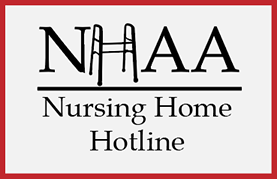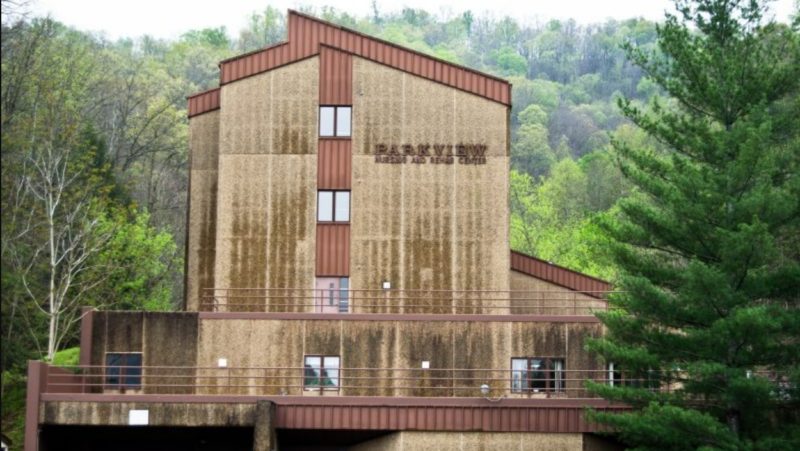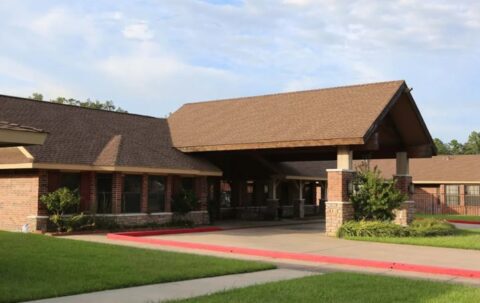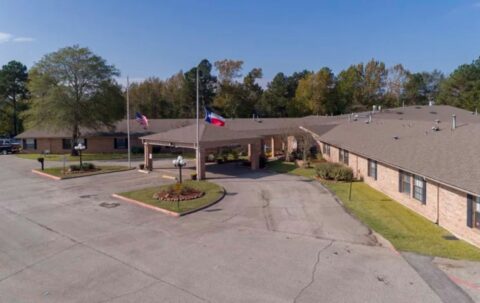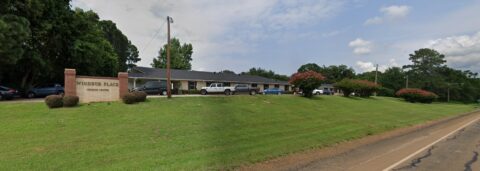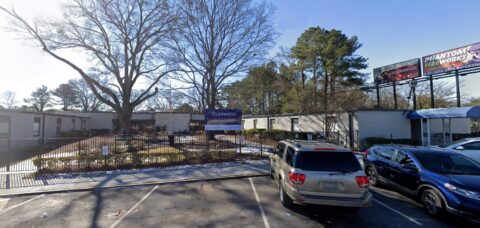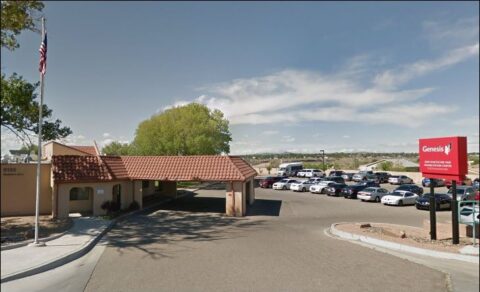State Findings:
Based on observation, interview, record review, and review of the facility’s policy review, it was determined
the facility failed to ensure two (2) of five (5) sampled residents (Resident #65 and Resident #66) received
care to prevent pressure ulcers and failed to ensure care and treatment was provided for four (4) of seven (7)
residents with pressure ulcers (Resident #65, Resident #45, Resident #14, and Resident #323) to promote
healing, prevent infection and/or prevent new pressure ulcers from developing.
On [DATE], a wound care specialist assessed Resident #45 and noted the pressure sore to the left buttock
was a Stage IV (four) and required excisional debridement to the level of the muscle. The facility failed to
assess the resident’s pressure ulcer during weekly skin assessments from [DATE] through [DATE]. On
[DATE], a foul-smelling odor and increased depth and drainage from the wound bed was noted. The resident
was transferred to the ED where he/she required antibiotics and inpatient wound care. The pressure ulcer
extended to the level of the left ischial tuberosity (hip bone). Resident #45 was diagnosed with
[CONDITION(S)] (infection of the bone).
Review of Resident #14’s medical record revealed the facility identified three (3) Stage II pressure ulcers on
the resident’s left trochanter (hip) on [DATE]. The facility failed to assess the resident’s skin and the pressure
ulcers weekly as required.
Further, the facility admitted Resident #323 on [DATE] with physician’s orders [MEDICAL RECORD OR
PHYSICIAN ORDER] . The facility failed to provide the treatment to the resident’s pressure ulcer until
[DATE], five (5) days after admission to the facility.
The facility admitted Resident #65 on [DATE] without pressure ulcers. The facility failed to turn and reposition
the resident. On [DATE], Resident #65 developed a deep tissue injury to the coccyx. The facility failed to
assess the pressure ulcer (measurements, appearance, drainage, odor, etc.). Subsequently, the facility also
failed to identify the pressure ulcer had worsened. On [DATE], Resident #65 was transferred to the
Emergency Department (ED) due to worsening of the pressure ulcer and was clinically septic with large
decubitis [pressure] ulcer with associated infection including [CONDITION(S)] and possible abscess.
Resident #65 underwent debridement on [DATE], when all necrotic tissue was removed the excision was
down to the bone.
Resident #65 was readmitted to the facility. However, the facility continued to fail to turn and reposition
Resident #65; and, failed to conduct weekly skin and/or pressure ulcer assessments. Resident #65
developed five (5) more pressure ulcers and the resident’s sacral pressure ulcer worsened. In addition, the facility identified Resident #45 had a Stage III (3) pressure ulcer on [DATE] to the left sacrum.
However, there was no documented evidence the wound was assessed in accordance with the facility’s
wound assessment form, including measurements, appearance, etc.
Review of a Change of Condition form on [DATE] at 2:40 PM revealed Resident #65’s pressure ulcer to the
coccyx was worsening. The deep tissue injury (DTI) was now an unstageable pressure ulcer (full thickness
tissue loss [death] in which the base of the ulcer is covered by slough [yellow, tan, green or brown] and/or
eschar [tan, brown, or black] in the wound bed) that measured 6.5 cm long and 9.7 cm wide. According to
the note, the resident’s physician was contacted and new orders were obtained to clean the coccyx with
soap and water, pat dry, apply calcium alginate (Ag) and cover with a dressing every day.
Review of a Head to Toe Weekly Skin Checks for Resident #65, revealed the next day, [DATE] at 3:17 PM,
the unstageable pressure ulcer to the resident’s coccyx had increased in size to 10 cm long by 10 cm wide.
Seven (7) days later, on [DATE], the pressure ulcer to the coccyx/sacrum measured 9.5 cm in length and 10
cm in width. Continued review of the Head to Toe Weekly Skin Checks dated [DATE] at 5:37 PM revealed
the resident’s pressure ulcer to the sacrum increased in size, measuring 16.5 cm long and 17.7 cm wide.
Further review revealed there was no documented evidence the facility assessed the wound’s appearance,
or whether drainage or odor was present for any date. The facility continued to treat Resident #65’s wound
with calcium alginate. However, there was no documented evidence the resident’s physician was notified
that the pressure ulcer had increased in size.
Review of the Wound Care Office Visit notes for Resident #65 dated [DATE] revealed the context consists of
bed ridden, friction/rubbing and infrequent position changes. The note further revealed the sacrum wound
had increased in size since the facility’s last assessment on [DATE], and measured 15.5 cm (length) by 15
cm (width) and 1.8 cm (depth). Further, the note revealed moderate serosanguinous exudate with no foul
odor. The wound was assessed to have 67%-100% granulation and 34%-66% necrosis of muscle, with bone
exposed. The physician conducted an Excisional debridement to the level of the muscle, removing all
non-viable tissue, biofilm, slough and exudate from the wound bed to healthy granular borders. The
physician changed the wound care to treat with [MEDICATION(S)] Ag daily and cover with a
[MEDICATION(S)] border.
Interview with Registered Nurse (RN) #4/Wound Care Nurse on [DATE] at 8:30 PM revealed she became
the wound care nurse when she returned from maternity leave in the middle of [DATE]. She stated she knew
nothing about pressure ulcers and the facility provided no training. She stated the facility did not educate her
regarding her responsibilities as the wound nurse. RN #4 stated she was aware wounds should be measured
every week; however, she stated she worked the floor as much as she performed duties as the wound care
nurse. The Wound Care Nurse stated since she could not provide wound care/assess wounds as required,
staff nurses were providing wound care and assisting with assessments. However, she stated there were no
systems in place to ensure the assessments were completed; subsequently, they were n [TRUNCATED).
Your Experience Matters
...and we want to hear it.
NHAA is here to assist families, residents, and the community by sounding the alarm on issues like those found above. This nursing home and many others across the country are cited for abuse and neglect.
If you have or had a loved one living in this nursing home or any other nursing home where you suspect any form of abuse or neglect, contact us immediately.
We have helped many already and we can help you and your loved one as well by filing a state complaint, hiring a specialized nursing home attorney or helping you find a more suitable location for your loved one.
You can make a difference, even if your loved one has already passed away.
Please give us a call at 1-800-645-5262 or fill out our form detailing your experience.
Personal Note from NHA-Advocates
NHAA shares with all the families of loved ones who are confined to nursing homes the pain and anguish of putting them in the care of someone else. We expect our loved ones to be treated with dignity and honor in the homes we place them. We cannot emphasize enough to family members of nursing home residents; frequent visits are essential to our loved ones’ well-being and safety.
If you are struggling and upset, click here to understand your options, or contact us through our contact form or call our toll free hot line number: 1-800-645-5262.
